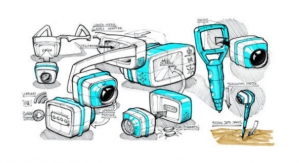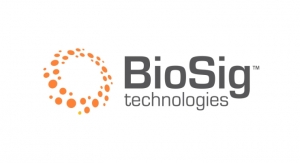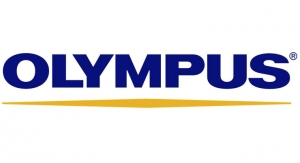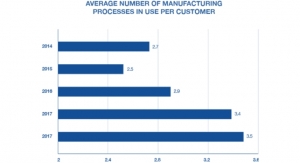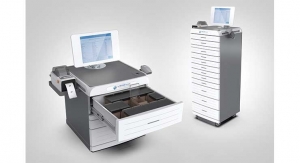Bartosz Korec, Lead Industrial Designer, BlackHägen Design10.08.19
From birth until death, humans are most emotionally and physically vulnerable in the presence of healthcare professionals. This is what makes healthcare product design gratifying and rewarding; our work has significant impact on an individual’s life. However, the potential for a traumatic experience is enormous and special design considerations must be taken into account. This article will outline unique concerns in the medical space and how proper attention to these sensitivities is critical in ensuring patients’ and health professionals’ optimized experience and outcome.
The clinician’s needs can be quite different from the patient’s, but their first and foremost concern is efficiency and intuitiveness leading to reduced errors during operation.
To avoid accidental misuse, the product’s operation must be clear and instinctive. Become intimate with legacy devices familiar to the end-user that have similar therapeutic function. This knowledge can be leveraged to reduce the learning curve in terms of workflow, iconography, information type, and location. This is advantageous as clinicians have little time to re-train or reference the Instructions-for-Use in the field, particularly during stressful and time-critical situations. Design the device for safe operation without extensive (re)training if possible. This can be a challenging expectation in cases where the device is only intermittently deployed, thereby operating it each time as if it was the first exposure. In these cases, an illustrated guide or on-screen setup wizard can instruct users in real time.
However, these guided procedures cannot slow down or obstruct an experienced user expecting efficient performance. Along with simplistic, intuitive designs and workflows, physical Quick Reference Guides assist when necessary and offer visual prompts in chronological order. These additive aids must be secured to the device and made of sturdy materials to survive the abusive environment.
Medical devices must answer to many diverse user groups’ needs and capabilities. For instance, doctors, nursing staff, and biomedical technologists operate bedside consoles, and each distinct group must be provided with proper information and controls. This could mean large fonts for critical data that must be readable by a clinician from across the room, while contextual touchscreen prompts can lead to more specific and densely populated diagnostic information in smaller fonts accessed by other clinicians and biomeds within arm’s reach.
Many consumer products optimize ergonomics within a narrow demographic, but medical devices must be efficiently usable across a wide anatomical range. This is important for handheld objects because of the close relationship of anatomical size to device dimensions—adult hand length variation between a 5th percentile female and a 95th percentile male can be two inches. Test interfaces with users early to ensure the design supports a wide range of human sizes within the intended ethnographic group. Modern 3D-CAD and rapid-prototyping techniques have made this exploratory process more efficient, enabling us to test multiple iterative, digitally accurate geometric iterations.
Alarm design is also critical to patient safety. Appropriate selection of critical vs. non-critical alarms can prevent the clinical staff’s overstimulation and resulting work-related fatigue. While both visual and auditory stimulants must be clearly identifiable and attention-grabbing, alarms can be harmonious and informative without causing confusion with neighboring devices.
The OR provides its own challenges. White display backgrounds are easier to read but cast too much light during endoscopic procedures in a darkened OR or Cath Lab, so reverse GUIs with black backgrounds are more suitable. Informational hierarchy is vital—a secondary component should not compete for attention with the primary interface. Handheld devices must be comfortable, secure and safe to operate in a dark, slippery, pathogenic environment. Consumer product materials and textures are unlikely to perform the same way under blood, fat, and steam sterilization constraints. Triggers and geometry cannot puncture sterile gloves during normal actuation and all controls should be identifiable by haptic stimulation, since the clinician’s visual attention shouldn’t be diverted from the most important focal points. Color-coding touchpoints establish a visual hierarchy and promote fast feature recognition, while primary controls must be easily accessible without having to re-grip for accessibility. “Set and forget” controls are typically adjusted before the procedure starts and can benefit from being located where they don’t compete with primary controls or can be inadvertently activated.
A recurring requirement relates to device maintenance, servicing, and hygiene. Consoles are wiped down regularly to avoid bacterial buildup in the patient’s vicinity which would be detrimental. Avoid creating dirt traps like recesses and crevices which are difficult to access with conventional cleaning methods. Housing surfaces should transition gently from one plane to another for a more efficient wipe-down process. Avoid sliding interfaces—they can become jammed with foreign matter. Touchscreens provide an alternative to dials and buttons, thereby avoiding dirt traps, but they too must tolerate regular cleaning without damage. Touchscreens aren’t the preferred solution in devices requiring little data transfer due to inferior tactile and haptic feedback when compared to well-executed discrete controls like jog shuttles and rotary dials.
Most medical devices in hospitals will need servicing, and technicians maintaining them have their own demands. Floor space is always at a premium for storage, so solutions reducing storage volume are desirable. These departments are often a treasure trove of insights during the research phase, since the various home-made labels and workarounds give valuable insights into unmet user needs and can inform future development initiatives.
Don’t underestimate how product appearance impacts the clinician. A device that looks modern, stylish, and technically advanced inspires user confidence and raises work satisfaction. Also be cognizant to retain a friendly and human-centric appearance in touch with their patient-care focus. Skyrocketing institutional costs are growing in the home-healthcare market. These devices intersect consumer and medical design and require additional considerations. Understand where a device lives in a patient’s home, what it should look like, and how it should behave to fit into their lifestyle. Many patients hide their device to avoid broadcasting their condition to the world. These products could be designed to be sophisticated in appearance and complimentary to the home, similar to network routers’ evolution from hidden “blackboxes” to sculptural objects on the coffee table. Instill pride of ownership instead of encouraging shame of the condition. Consider unique domestic environmental requirements—i.e., having pets, or no help with a physically limited, under-educated end-user.
The emotional impact of a medical device’s appearance or operation on the patient cannot be overstated. It must look confidence-inspiring in its technological prowess and reliability to increase the perceived outlook on a condition; a critical-care device may be keeping the patient alive or in acceptable health. When designing a bedside device, consider how it provides feedback to clinical staff without distressing the patient or their visitors. If the patient finds the device appearance intimidating it can negatively affect their spirit and physical wellbeing. Light scatter from multiple displays can keep a patient awake at night, therefore automated night-modalities make sense for critical-care devices.
Ergonomics can be challenging in patient care design since many limiting factors must be taken into account. Old and sick patients often have weaker grip strength and dexterity, arthritis, bad eyesight, color-blindness, hearing, and cognitive impairment. Certain conditions can lead to comorbidities like peripheral neuropathy in diabetic patients or carpal tunnel syndrome associated with rheumatoid arthritis. Conduct careful testing and evaluation to determine appropriate user interfaces. Adopting a philosophy of providing multiple redundant sensory feedbacks can promote reliable information transfer.
Wearable devices offer a similar aesthetic challenge; diabetic pumps and sensors shun traditional “institutional” aesthetics for a modern consumer device style emulating cell phones, audio devices, and recreational equipment. Patients prefer to be considered healthy and stay active more than ever. They will be exposed to different social and environmental settings; for instance, we don’t want an audible alarm triggered in a quiet cinema, and instead might implement a timed “sleep mode” for quiet vibration alerts. Similarly, some devices can be exposed to water in a swimming pool or in the shower and must be designed appropriately.
We have discussed device exposure to chemical cleaning agents or environmental water hazards and the importance of meeting these requirements. For consoles, water ingress into connector and ventilation openings must be controlled while large flat areas should be avoided that can allow liquids to collect. Portable outdoor devices might need sealing around parting lines and controls, using rubber plugs or sealed doors for ports and connectors. Patients must be shielded from noisy, hot, or otherwise unpleasant components—place these down low, behind, or sufficiently baffled and placed farthest away from the user. The system design should seek to minimize noise, vibration, and harshness through refined components, compliant mountings, and suitable housing structure. Compare a modern CPAP with one from decades ago—current designs are very consumer-product like: whisper quiet, incredibly sophisticated, and feature sleek, clean lines and compact dimensions.
Many markets consider the previous generation of single-use devices wasteful and environmentally harmful. This has led to a rise in hybrid products where critical components like blades and other sacrificial elements are single-use, while durable portions can be repurposed. Understand cultural implications when designing for critical geographic markets. Avoid certain shapes and colors that prevent negative regional associations, or features that connote cheap consumer goods. Black is associated with death in Japan, and in Germany “post-office yellow” is not an appropriate medical attribute. Review design concepts with representatives from relevant cultures early, before the design direction is finalized.
RoHS compliance has become a critical feature in European markets, which essentially restricts the use of hazardous materials. Combined with the desire to maximize the ability to recycle the device at its end-of-life, designers must select appropriate eco-friendly materials that meet rigorous environmental and technical requirements and support sustainability.
Ideally, the design execution should enhance the overall therapeutic experience, and offer the clinician maximized efficiency and safety while serving the patient with an empathic and competent therapy. These devices help shape the lasting experience in some of the most vulnerable moments of a person’s life, and are worthy of attention and careful consideration.
Bartosz Korec is the Lead Industrial Designer at BlackHägen Design, an R&D and HFE consultancy. With close to 20 years of combined consumer and medical design experience, Bartosz has contributed to all phases of product design from observational research, through concept development and testing, to mechanical design for manufacture.
The clinician’s needs can be quite different from the patient’s, but their first and foremost concern is efficiency and intuitiveness leading to reduced errors during operation.
To avoid accidental misuse, the product’s operation must be clear and instinctive. Become intimate with legacy devices familiar to the end-user that have similar therapeutic function. This knowledge can be leveraged to reduce the learning curve in terms of workflow, iconography, information type, and location. This is advantageous as clinicians have little time to re-train or reference the Instructions-for-Use in the field, particularly during stressful and time-critical situations. Design the device for safe operation without extensive (re)training if possible. This can be a challenging expectation in cases where the device is only intermittently deployed, thereby operating it each time as if it was the first exposure. In these cases, an illustrated guide or on-screen setup wizard can instruct users in real time.
However, these guided procedures cannot slow down or obstruct an experienced user expecting efficient performance. Along with simplistic, intuitive designs and workflows, physical Quick Reference Guides assist when necessary and offer visual prompts in chronological order. These additive aids must be secured to the device and made of sturdy materials to survive the abusive environment.
Medical devices must answer to many diverse user groups’ needs and capabilities. For instance, doctors, nursing staff, and biomedical technologists operate bedside consoles, and each distinct group must be provided with proper information and controls. This could mean large fonts for critical data that must be readable by a clinician from across the room, while contextual touchscreen prompts can lead to more specific and densely populated diagnostic information in smaller fonts accessed by other clinicians and biomeds within arm’s reach.
Many consumer products optimize ergonomics within a narrow demographic, but medical devices must be efficiently usable across a wide anatomical range. This is important for handheld objects because of the close relationship of anatomical size to device dimensions—adult hand length variation between a 5th percentile female and a 95th percentile male can be two inches. Test interfaces with users early to ensure the design supports a wide range of human sizes within the intended ethnographic group. Modern 3D-CAD and rapid-prototyping techniques have made this exploratory process more efficient, enabling us to test multiple iterative, digitally accurate geometric iterations.
Alarm design is also critical to patient safety. Appropriate selection of critical vs. non-critical alarms can prevent the clinical staff’s overstimulation and resulting work-related fatigue. While both visual and auditory stimulants must be clearly identifiable and attention-grabbing, alarms can be harmonious and informative without causing confusion with neighboring devices.
The OR provides its own challenges. White display backgrounds are easier to read but cast too much light during endoscopic procedures in a darkened OR or Cath Lab, so reverse GUIs with black backgrounds are more suitable. Informational hierarchy is vital—a secondary component should not compete for attention with the primary interface. Handheld devices must be comfortable, secure and safe to operate in a dark, slippery, pathogenic environment. Consumer product materials and textures are unlikely to perform the same way under blood, fat, and steam sterilization constraints. Triggers and geometry cannot puncture sterile gloves during normal actuation and all controls should be identifiable by haptic stimulation, since the clinician’s visual attention shouldn’t be diverted from the most important focal points. Color-coding touchpoints establish a visual hierarchy and promote fast feature recognition, while primary controls must be easily accessible without having to re-grip for accessibility. “Set and forget” controls are typically adjusted before the procedure starts and can benefit from being located where they don’t compete with primary controls or can be inadvertently activated.
A recurring requirement relates to device maintenance, servicing, and hygiene. Consoles are wiped down regularly to avoid bacterial buildup in the patient’s vicinity which would be detrimental. Avoid creating dirt traps like recesses and crevices which are difficult to access with conventional cleaning methods. Housing surfaces should transition gently from one plane to another for a more efficient wipe-down process. Avoid sliding interfaces—they can become jammed with foreign matter. Touchscreens provide an alternative to dials and buttons, thereby avoiding dirt traps, but they too must tolerate regular cleaning without damage. Touchscreens aren’t the preferred solution in devices requiring little data transfer due to inferior tactile and haptic feedback when compared to well-executed discrete controls like jog shuttles and rotary dials.
Most medical devices in hospitals will need servicing, and technicians maintaining them have their own demands. Floor space is always at a premium for storage, so solutions reducing storage volume are desirable. These departments are often a treasure trove of insights during the research phase, since the various home-made labels and workarounds give valuable insights into unmet user needs and can inform future development initiatives.
Don’t underestimate how product appearance impacts the clinician. A device that looks modern, stylish, and technically advanced inspires user confidence and raises work satisfaction. Also be cognizant to retain a friendly and human-centric appearance in touch with their patient-care focus. Skyrocketing institutional costs are growing in the home-healthcare market. These devices intersect consumer and medical design and require additional considerations. Understand where a device lives in a patient’s home, what it should look like, and how it should behave to fit into their lifestyle. Many patients hide their device to avoid broadcasting their condition to the world. These products could be designed to be sophisticated in appearance and complimentary to the home, similar to network routers’ evolution from hidden “blackboxes” to sculptural objects on the coffee table. Instill pride of ownership instead of encouraging shame of the condition. Consider unique domestic environmental requirements—i.e., having pets, or no help with a physically limited, under-educated end-user.
The emotional impact of a medical device’s appearance or operation on the patient cannot be overstated. It must look confidence-inspiring in its technological prowess and reliability to increase the perceived outlook on a condition; a critical-care device may be keeping the patient alive or in acceptable health. When designing a bedside device, consider how it provides feedback to clinical staff without distressing the patient or their visitors. If the patient finds the device appearance intimidating it can negatively affect their spirit and physical wellbeing. Light scatter from multiple displays can keep a patient awake at night, therefore automated night-modalities make sense for critical-care devices.
Ergonomics can be challenging in patient care design since many limiting factors must be taken into account. Old and sick patients often have weaker grip strength and dexterity, arthritis, bad eyesight, color-blindness, hearing, and cognitive impairment. Certain conditions can lead to comorbidities like peripheral neuropathy in diabetic patients or carpal tunnel syndrome associated with rheumatoid arthritis. Conduct careful testing and evaluation to determine appropriate user interfaces. Adopting a philosophy of providing multiple redundant sensory feedbacks can promote reliable information transfer.
Wearable devices offer a similar aesthetic challenge; diabetic pumps and sensors shun traditional “institutional” aesthetics for a modern consumer device style emulating cell phones, audio devices, and recreational equipment. Patients prefer to be considered healthy and stay active more than ever. They will be exposed to different social and environmental settings; for instance, we don’t want an audible alarm triggered in a quiet cinema, and instead might implement a timed “sleep mode” for quiet vibration alerts. Similarly, some devices can be exposed to water in a swimming pool or in the shower and must be designed appropriately.
We have discussed device exposure to chemical cleaning agents or environmental water hazards and the importance of meeting these requirements. For consoles, water ingress into connector and ventilation openings must be controlled while large flat areas should be avoided that can allow liquids to collect. Portable outdoor devices might need sealing around parting lines and controls, using rubber plugs or sealed doors for ports and connectors. Patients must be shielded from noisy, hot, or otherwise unpleasant components—place these down low, behind, or sufficiently baffled and placed farthest away from the user. The system design should seek to minimize noise, vibration, and harshness through refined components, compliant mountings, and suitable housing structure. Compare a modern CPAP with one from decades ago—current designs are very consumer-product like: whisper quiet, incredibly sophisticated, and feature sleek, clean lines and compact dimensions.
Many markets consider the previous generation of single-use devices wasteful and environmentally harmful. This has led to a rise in hybrid products where critical components like blades and other sacrificial elements are single-use, while durable portions can be repurposed. Understand cultural implications when designing for critical geographic markets. Avoid certain shapes and colors that prevent negative regional associations, or features that connote cheap consumer goods. Black is associated with death in Japan, and in Germany “post-office yellow” is not an appropriate medical attribute. Review design concepts with representatives from relevant cultures early, before the design direction is finalized.
RoHS compliance has become a critical feature in European markets, which essentially restricts the use of hazardous materials. Combined with the desire to maximize the ability to recycle the device at its end-of-life, designers must select appropriate eco-friendly materials that meet rigorous environmental and technical requirements and support sustainability.
Ideally, the design execution should enhance the overall therapeutic experience, and offer the clinician maximized efficiency and safety while serving the patient with an empathic and competent therapy. These devices help shape the lasting experience in some of the most vulnerable moments of a person’s life, and are worthy of attention and careful consideration.
Bartosz Korec is the Lead Industrial Designer at BlackHägen Design, an R&D and HFE consultancy. With close to 20 years of combined consumer and medical design experience, Bartosz has contributed to all phases of product design from observational research, through concept development and testing, to mechanical design for manufacture.






